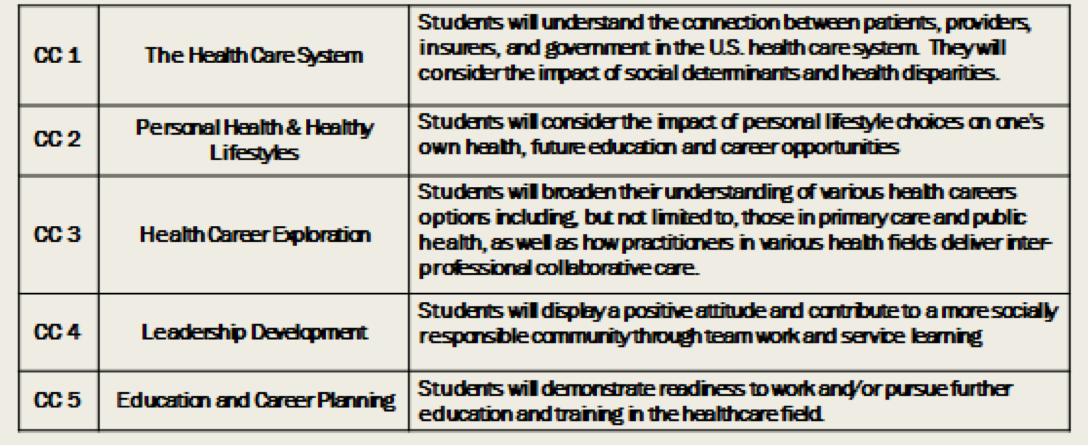Hello from Debi Lang with the Massachusetts Area Health Education Center Network (MassAHEC) at the University of Massachusetts Medical School’s Center for Health Policy and Research. I last published an aea365 post on how evaluation and program staff collaborated to establish a competency-based model for a range of MassAHEC Health Careers Promotion and Preparation (HCPP) programs. The current post focuses on the importance of learning objectives as part of program design and evaluation, with some tips and resources on how to write clear objectives.
The AHEC HCPP model consists of 5 core competencies with learning goals that apply across a range of HCPP programs (see the chart below).
Core Competencies Learning Goals
Each of the programs has written learning objectives that define specific knowledge, skills, and attitudes students will learn by participating in these programs. Learning objectives are important because they:
- document the knowledge, skills, attitudes/behaviors students should be able to demonstrate after completing the program;
- encourage good program design by guiding the use of appropriate class activities, materials, and assessments;
- tell students what they can expect to learn/become competent in by participating in the program; and
- help measure students’ learning.
Below are some of the learning objectives from one HCPP program and their connection to the competencies listed above:
Hot Tips: Here are some recommendations for writing learning objectives.
- Think of learning objectives as outcomes. What will students know/be able to do once they complete the program? Start with the phrase: “At the end of this program, students will…”
- Be careful not to write learning objectives as a description of the activities or tasks students will experience during the program.
- Make sure student learning assessments are based on the learning objectives.
Rad Resource: “Bloom’s Taxonomy” is a framework based on 6 levels of knowledge (cognition) that progress from simple to more complex. When writing learning objectives, use the keywords associated with the knowledge level you expect students to achieve.
To be continued…
Program-specific learning objectives that connect to one or more core competencies can help measure student learning in order to report program outcomes from a competency perspective on a local and state level. In a future post, I’ll discuss how learning objectives are used in an evaluation method called the retrospective pre-post, along with ways to analyze data collected using this design feature.
Do you have questions, concerns, kudos, or content to extend this aea365 contribution? Please add them in the comments section for this post on the aea365 webpage so that we may enrich our community of practice. Would you like to submit an aea365 Tip? Please send a note of interest to aea365@eval.org . aea365 is sponsored by the American Evaluation Association and provides a Tip-a-Day by and for evaluators.


